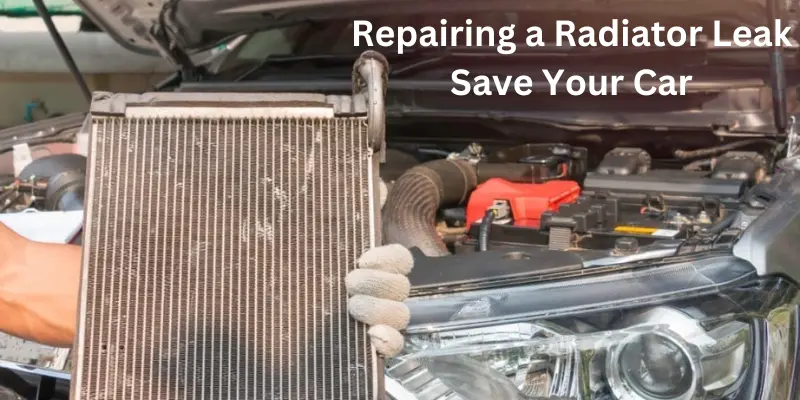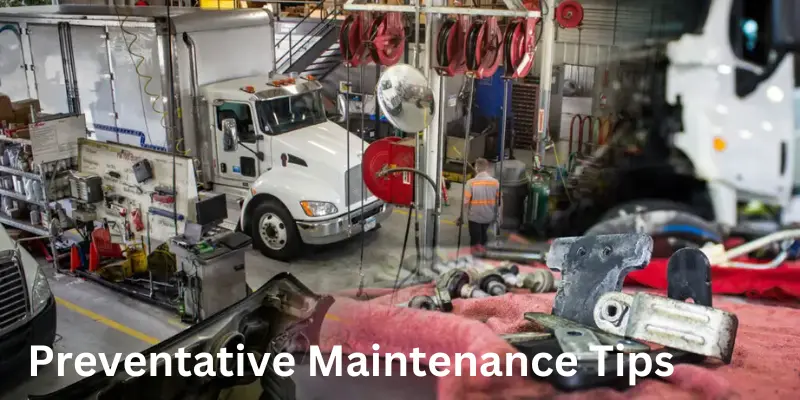Repairing a Radiator Leak | Save Your Car
Updated: 04 Dec 2024
73
A radiator is like your car’s personal cooling system. It stops the engine from getting too hot by using a special liquid called coolant. But sometimes, this system can spring a leak, like when a balloon gets a tiny hole.

Your car might overheat, which is bad because it can damage the engine. Fixing a radiator leak quickly is like putting a patch on a bike tire it keeps everything running smoothly and avoids bigger problems later. Plus, learning how to fix it can save you money and make you feel like a car repair hero.
Signs of a Radiator Leak
First, you need to check if your car’s radiator is leaking. Small leaks can be tricky to find, but big leaks are usually easy to spot. Here are some common signs to look out for.
- Puddles Under the Car
- Look under the car. If you see a green, orange, or yellow puddle, it might be coolant leaking from the radiator.
- Overheating Engine
- If the temperature gauge on your car shows the engine is getting too hot, a leaking radiator could be the problem.
You May Also Visit It
Copper Zinc Alloys – Step by Step Guide
Cast Iron Melting Temp | Discover Its Industrial Secrets
Is Aluminium Magnetic Material | Types, Uses and Properties
Physical Properties Are Shared by Most Metals
- Low Coolant Levels
- The coolant helps keep the engine cool. If it’s running low often, there might be a leak.
- Steam Coming from the Engine
- If you see steam or white smoke coming from the front of your car, it might mean hot coolant is leaking out.
- Weird Smell
- Leaking coolant sometimes smells sweet. If you smell something unusual around your car, it’s worth checking the radiator.
- Rust or Discoloration on the Radiator
- If parts of the radiator look rusty or have strange colors, it might mean coolant is leaking out.
Tools and Materials You’ll Need
Before you start fixing the radiator, gather these things:
- Gloves: To keep your hands safe and clean.
- Coolant (Antifreeze): You’ll need this to refill the radiator later.
- Bucket or Pan: To catch any liquid that comes out.
- Radiator Sealant or Epoxy: This is like glue to fix the leak.
- Wrench or Screwdriver: To open and tighten parts.
- Clean Cloth: To wipe things clean.
- Flashlight: To help you see clearly under the hood.
How to Fix the Leak
Get Ready to Fix the Leak
Before you start fixing the radiator, make sure you follow these safety steps:
- Let the Engine Cool Down: Wait for the car to cool off. The engine gets really hot when it’s running, and you could get burned if you touch it too soon.
- Wear Safety Gloves: Put on gloves to protect your hands from any sharp parts or hot surfaces.
- Turn Off the Car: Make sure the car is off and parked in a safe place before you start working on it.
How to Find the Leak in the Radiator
- Look for Wet Spots:
- Check around the radiator and hoses for any wet or shiny areas. Coolant (the liquid that helps your car stay cool) can make things look damp.
- Watch for Overheating:
- If your car gets too hot quickly or the temperature gauge goes into the red zone, it could mean there’s a leak.
- Check for Coolant Puddles:
- Sometimes, you’ll see a puddle of green, yellow, or orange liquid under your car. This could be coolant that leaked out.
- Pressure Test:
- If you can’t find the leak by looking, a special tool called a pressure tester can help. It adds air to the system, which can make the leak easier to spot.
Fix the Leak
- What You’ll Need:
- You will need some special tools and materials to fix the leak. These include:
- A sealant (kind of like glue) for small holes or cracks.
- New hoses if one is broken.
- You will need some special tools and materials to fix the leak. These include:
- Using Sealant:
- If you see a tiny crack or hole in the radiator, you can use sealant to close it up. Sealant is like a special glue made just for fixing leaks in the radiator.
- Carefully apply it on the leak and follow the instructions on the sealant container.
- Replacing a Hose:
- Sometimes, the hoses (the rubber tubes that carry the coolant) get old or break. If that happens, you’ll need to replace them.
- To do this, you will take off the old hose and put the new one in the same place. Make sure it’s tight so the coolant doesn’t leak out.
Put It Back Together
- Reconnect Everything:
- After you fix the leak, make sure all the parts you removed (like hoses or pipes) are put back in the right places.
- Check to see that everything is tight and connected properly so no coolant will spill.
- Add Coolant:
- Pour coolant (the special liquid that keeps the engine cool) into the radiator. Make sure to fill it up to the correct line, which should be marked on the radiator.
- Check the Reservoir Tank:
- There’s another small tank near the radiator called the “reservoir.” Fill that with coolant too, just like you did with the radiator.
- Close Everything:
- Once the coolant is filled, put the radiator cap back on and make sure it’s closed tightly so no coolant leaks out.
- Test the Car:
- Turn on the car and let it run for a while. Check around the radiator to make sure no coolant is leaking out. If it seems good, you are done.
Test It
- Start the Car: Turn on the car and let it run for a few minutes. Listen carefully for any strange sounds or anything that feels wrong.
- Look for Leaks: Check the radiator and hoses again. See if any coolant is dripping out.
- Drive Slowly: Take the car for a short drive. Make sure it does not overheat, and the car feels normal.
- Check Again: After the drive, stop and look for any leaks. If everything looks good, you are done.
Preventative Maintenance Tips
To keep your radiator working well and avoid leaks in the future, here are some simple things you can do:

- Check Your Coolant: Make sure your car has enough coolant. This helps keep the engine cool and stops the radiator from getting too hot and breaking.
- Look for Leaks: Every now and then, check around the radiator for puddles or any wet spots. If you see anything, it might be a sign that there’s a leak.
- Keep It Clean: Dust and dirt can block the radiator. Make sure it’s clean and free of leaves or mud that could get stuck in it.
- Change Old Parts: Sometimes the hoses or radiator cap can wear out and break. Replace them if they look old or cracked.
- Top Up the Fluids: Check your radiator fluid and add more if it’s low. This helps keep everything running smoothly.
By taking care of these simple things, your radiator will last longer and keep your car working well.
You May Also Visit It
What is Ferrous vs Non Ferrous Metals – Complete Guide
What is Titanium Steel – Types, Uses, Properties and Modern Metal
Plasma Cutter How Does It Work – Complete Guide
Is Copper a Metalloid | Understanding the Classification of Elements
Disadvantages of Radiator Leak
Here are the drawback of a radiator leak explained in a simple:
| Disadvantages |
|---|
|
FAQs of Repairing a Radiator Leak
What is a radiator leak?
A radiator leak happens when the radiator (a part in a car that keeps the engine cool) starts to lose its coolant. This could happen because of cracks, holes, or worn-out parts. If the leak is not fixed, the car engine might overheat.
How do I know if my radiator is leaking?
Some signs include:
- Coolant puddles under the car.
- Overheating: The car’s temperature gauge gets too high.
- Low coolant: You notice the coolant level drops quickly.
- You might even smell burnt antifreeze.
Can I fix a radiator leak myself?
Yes, you can fix small leaks at home if you have the right tools and follow the instructions carefully. But if the leak is big or if you are unsure, it’s better to ask a professional mechanic for help.
What tools do I need to fix a radiator leak?
You will need:
- A wrench to loosen bolts.
- Coolant to refill the radiator.
- Sealant or epoxy to fix the small leaks.
- A pressure tester to check for leaks (if needed).
How do I find where the leak is?
You can look for:
- Puddles or spots of coolant under the car.
- Visual checks of the radiator, hoses, and pipes.
- Pressure tests can help find hidden leaks inside the radiator. (A special tool helps with this).
How do I fix a small radiator leak?
For small leaks, you can use a sealant or epoxy to seal the crack. First, clean the area around the leak, apply the sealant, and let it dry before adding coolant back into the radiator.
Can I drive my car if the radiator is leaking?
It’s not safe to drive a car with a radiator leak. The car might overheat and cause serious engine damage. It’s better to get it fixed as soon as possible.
How can I prevent radiator leaks?
- Regularly check the coolant level and make sure it’s full.
- Inspect the radiator and hoses for cracks.
- Keep the radiator clean and free of debris.
When should I call a mechanic?
If the leak is large, or if you do not feel comfortable fixing it, it’s best to call a professional. Mechanics have the right tools and experience to fix bigger problems safely.
How long will my radiator last?
A radiator can last a long time, but it depends on how well you take care of it. Regular checks and proper maintenance can keep it working well for many years.
Conclusion
Fixing a radiator leak is important to keep your car running smoothly. If you notice signs like coolant puddles or your car overheating, it’s best to fix the problem quickly. By following a few simple steps, like finding the leak, cleaning the area, and using the right tools or sealants, you can repair the leak yourself. Just remember to always be careful and take safety steps, like letting the engine cool down before you start.
If the leak is too big or hard to fix, it’s okay to ask a professional mechanic for help. Regularly checking your radiator can prevent leaks from happening in the first place. Taking care of your car’s cooling system keeps it working well and helps avoid expensive repairs later on.
You May Also Visit It
Cast Iron Melting Temp | Discover Its Industrial Secrets
Metal Stamping Aluminum | Easy Steps to Understand Metal Stamping
Diagram of V8 Engine Explore the Power Behind Every Part
Welding Position | Types, Properties and Uses – Pros and Cons
What is Cold Roll Steel: Types, Grades and Uses | Pros and Cons
Please Write Your Comments